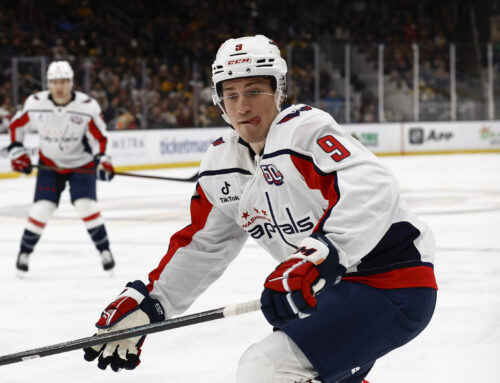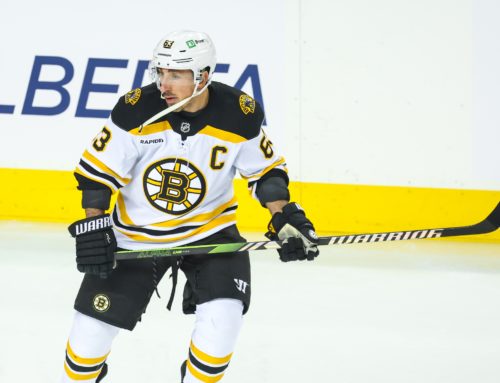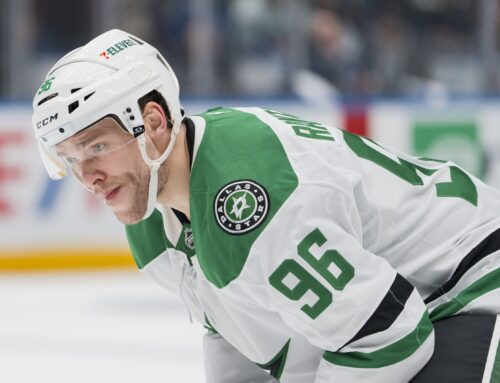
This week's Capped discusses strangely structured contracts, and what they can mean for your cap team.
****
Hoping this Thursday finds you all well. Considering the fact that there are now meaningful (though sometimes slightly lopsided) games to watch, I am definitely in a good mood. The only thing that could make it better, would be if Tyler Seguin hadn’t gotten injured in a pre-tournament game. I took over a salary cap dynasty league team this summer, and he is one of my better bargains. The league uses actual player salaries for the year, and not just the average annual value (AAV) of their contract. So with Seguin being a star player, and being paid $6 Million this year, he is quite the value player when he is not injured.
Using a player’s actual salary for the year provides a whole bunch of interesting problems. These problems come to light especially in the case of all of the front-end loaded contracts that were signed before a loophole in the Collective Bargaining Agreement (CBA) was patched up. The NHL salary cap structure is based upon calculating the total value of a player’s contract, dividing it over the years of the contract, and then that value is what counts against a team’s salary cap per year – a “cap-hit”. Front-end loaded contacts came along when some teams realized that they could reduce the cap hit of players, by agreeing to longer contracts, adding on say three or four years at the end for a smaller value of around $1 Million dollars a year. On a larger contract of $6 Million to $8 Million per year, this extra drop off made a large difference in the player’s cap-hit. The unwritten assumption in most cases was that the player would likely retire and not even play out the last few years that were tacked on at the end. This circumvention brought down the average value of the contract, and allowed both the teams and the players to win the deal in the long run. NHL lawyers generally don’t like getting bested, so that loophole was patched up fairly quickly.
In leagues like the aforementioned one that uses the actual salary of players, this kind of contract is a huge burden at the start, but becomes a massive bargain closer to the end. More recently though, after the front-end loaded contracts were ruled ineligible, some contracts have started to be shaped to dip down to lower monetary values in a random middle year or two. This again is to lower the overall, per-year cost of the contract. NHL General Managers and their staff love to get creative, and push rules to find any kind of advantage they can get.
Building your roster around winning in a certain window is something that takes a lot of practice. Generally the ages of players are what dictate a championship window. However, in salary cap leagues, especially those that count yearly salaries, the actual contract values can play an even bigger part. Here are a few contracts from my team that caught my eye due to their uniqueness.
.png)
*Contract values above are shown in millions of dollars.
Other than Jonathan Huberdeau, all of these contracts are current, and fluctuate by at least 25% of their annual value at some point or another. We can see the front-end loaded style of the contracts of the contracts of Patrice Bergeron, Andrew Ladd, and Brent Seabrook. These are not as extremely front-end loaded as some of the ones signed in the past, but the idea is still there. By the last few years of their deals, these players won’t be at their peak production, like most of them are right now; however, they are quite the set of bargains. Bergeron especially becomes a bargain in a league that counts faceoff wins. The other nice thing with these deals is that the players are not expected to retire by the time they reach the lower paying years of the deals, so fantasy owners can enjoy the cheap production.
Vladimir Tarasenko’s contract is especially interesting, as it bounces up and down from $5.5 Million one year, to $9.5 Million the next, and then back. This fluctuation makes it very difficult to keep a stable team while using the full amount of my allotted salary cap. Tarasenko is costing the St. Louis Blues $7.5 Million a year against the cap, which is a good/standard rate for a player of his skill. For what he brings to the table from a fantasy standpoint, it is even worth owning him at the most expensive points in his contract (the $9.5 Million years).
So what is there to look for with owning one of these contracts? If there are only one or two of these contracts on a fantasy team, then it does not make a large difference from year to year. With annual turnover of a fantasy team as well as contracts expiring and being renewed, there is enough change for contracts like Ekholm’s or Huberdeau’s to be overlooked in the shuffle. It pays, though, to be looking ahead in cap leagues and making sure that enough cap-space has been allocated for the new contracts that will be coming in. Knowing that a bump is coming, either by way of a young player needing a raise or by one of these fluctuating contracts, then maybe the prospect on an entry-level contract (ELC) becomes a little more valuable to you. On the flip side, knowing when you will have extra money to spend, allows you to proactively buy a pricier player. This could pay off if there is someone who is undervaluing an overpaid star, that you can get cheap and that you suddenly have salary cap room for.
The collection of them really makes it hard to field a full and competitive roster at the moment. It has necessitated the rostering of quite a few bargain bin players on entry-level contracts, as well as some lesser role players that can contribute in the peripheral categories. These initially high value contracts forced my hand to trade off players such as Kyle Okposo ($8 Million), Patrick Sharp ($5.9 Million) and Troy Brouwer ($4.5 Million) in exchange for much cheaper, and less talented players. Now I am just hoping that injuries don’t hit too hard, and that the bargain players can actually produce some useful stats.
The biggest conclusion to be drawn is to be fully aware of what is going on with your salary cap situation. If it is not you that is being proactive in terms of dealing with changing salaries, then someone else in your league will take advantage of you. Even in leagues where cap-hit is used, and not annual salary, the same principle applies in knowing when and how much of a raise your players will be due. I know Chris Pudsey has had some great Capped articles here over the last number of months touching on the same topic of being proactive with your players. I recommend checking some of those out if you have not had the chance.
****
As a note, Dmitry Orlov signed a one-year deal yesterday for $2.57 Million. I mentioned him in my article two weeks ago, making a point of the fact that I was estimating a 6-year deal for him. What this tells me is that Orlov is not budging from a higher salary demand over a longer term. Washington doesn’t have the cap space this year to fit him in at what he probably thinks he is worth. So this one-year deal kicks the can down the road. It will possibly allow Orlov to have a better showing, earn more money, and let Washington clear enough cap room to fit him into their long term plans.
****
If you have any questions about logistics of these unique contracts, or would like to hear more about my cap league situation, the feel free to leave a comment for me.
Have a great week, and thanks as always for reading. Go Canada!





 BUF
BUF CAR
CAR CBJ
CBJ OTT
OTT N.J
N.J BOS
BOS MTL
MTL DET
DET FLA
FLA TOR
TOR PIT
PIT CHI
CHI DAL
DAL VAN
VAN NSH
NSH NYI
NYI UTA
UTA SEA
SEA COL
COL VGK
VGK WSH
WSH STL
STL EDM
EDM ANA
ANA T.B
T.B L.A
L.A
